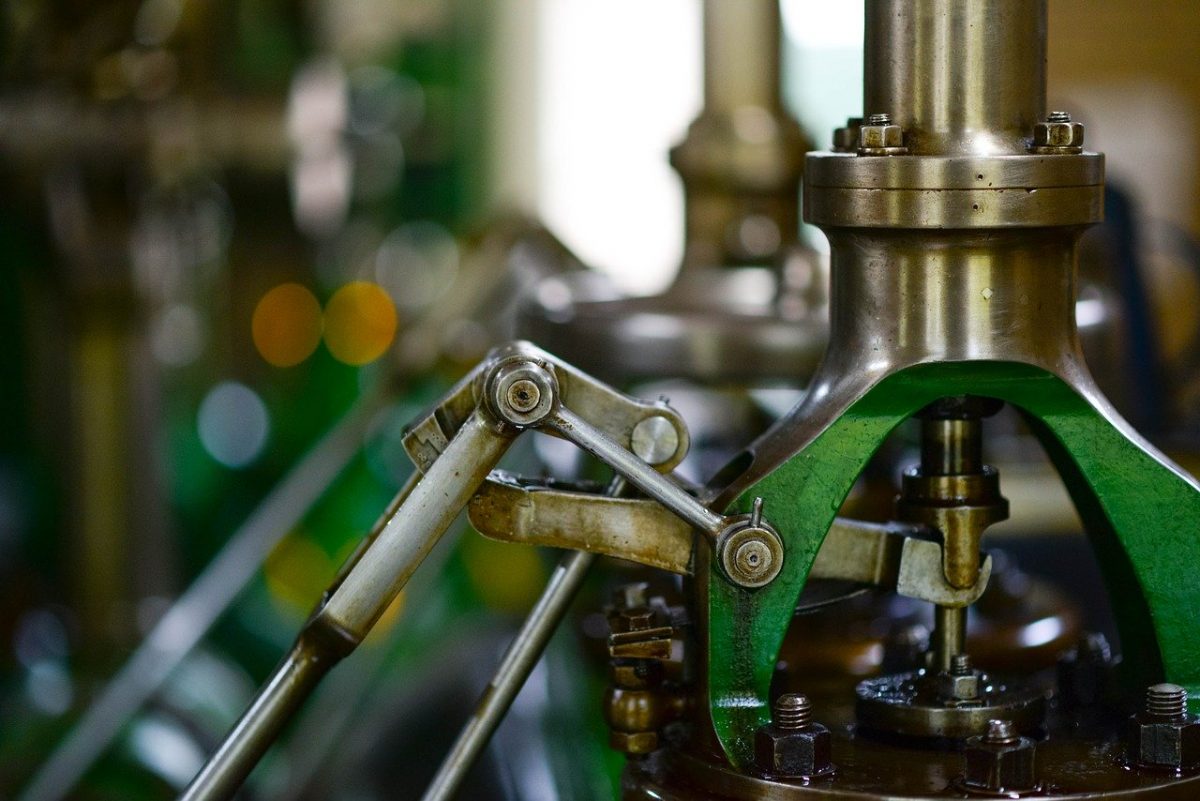Augmented Reality in manufacturing and in other sectors is becoming more common.
For example, when you sit down to watch the NFL playoffs, pay attention to those first-down markers, scrimmage lines, and text or images hovering just above the field. You know the ones I’m talking about–those little extra helpers that make it that much easier to follow the game and to know whether Tyreek Hill managed to get the first down (I mean–c’mon: he’s got Mahomes passing to him. You know he did.)
Maybe without even realizing it, you’ve been interacting with Augmented Reality (AR) technology each and every time you’ve lined up your remotes (or whatever good luck tradition rules in your house) and rooted for your favorite team. NFL broadcasts show just how easy it is to implement and interact with AR. It might also explain why you should be using this technology in your manufacturing plant if you’re not already.

AR/VR Terminology Explained
Yes, there’s a difference between AR and VR. AR (Augmented Reality) is the overlay of information including sound, video, or graphics in a real-world environment. When using AR, you still have a visual connection to the world around you, just with extra information added.
In contrast, virtual reality (VR) creates a separate, immersive world. This requires full immersion of the user, often as a digital manifestation, or “digital twin”, of himself. Beat Saber is a good example of VR.
Finally, there’s something called mixed or hybrid reality. This blends the real physical world with the virtual to produce a new kind of environment.
Today we’re going to focus on AR.
Who Invented VR and AR Technology?
Harvard professor Ivan Sutherland and his student Bob Sproull invented the first head-mounted AR display. Called the Sword of Damocles, the unit was not freestanding. To offset its weight, the unit mounted to the ceiling. The Sword of Damocles presented primitive wireframe rooms and objects to the viewer.
Augmented Reality in Manufacturing

AR for Assembly
One of the best uses for AR technology is in complex assembly situations. While robotics are valuable for some complex tasks, at this time robotics don’t have the agility of human hands. But when a component has hundreds or possibly thousands of pieces that must be placed in an exact sequence, expensive mistakes can occur due to human fallibility. To minimize these mistakes, manufacturers like Volvo use AR displays like Hololens. The Hololens allows for hands-free, heads-up access to assembly instructions, which replaces the need for paper PDFs. This has resulted in a reduction in both task completion time and errors.
AR for Offsite Diagnostics
Secondly, AR technology allows subject matter experts (SMEs) who are not physically present to help with on-site tasks. This can be done using AR technology and IIoT to transmit data information to a secondary location. The SME diagnoses the issue and then helps a technician on-site to complete the job. Essentially, the less-experienced local worker becomes the eyes, ears, and hands for the expert through the AR device.
This use of AR technology has multiple ramifications for your plant. If you have more than one physical plant location, you can share your experts across those locations. This saves the cost and time burden of having those experts travel from point to point.
As an added bonus, it can significantly cut down the amount of time your SMEs are unavailable to you due to travel time. It may also cut down on stress for those in-demand employees that always seem to be needed in two (or three) places at once. Additionally, it means when a plant location has a significant issue or breakdown, your expert can be “on-site” in minutes instead of hours or days.
Retaining SMEs after Retirement
It also partially solves two other issues. Many industries are currently struggling to replace their aging and retiring workforce with properly educated younger workers. At the same time, those older experts may feel unable to retire due to a lack of personal retirement funds, forcing them to remain on the job longer than they really want to. But AR technology gives your plant access to your SMEs regardless of their location. This means plant managers can offer part-time remote work to semi-retired knowledgeable staff if they want to do so. This allows your facility to continue to benefit from the knowledge of older staff members as they train their younger replacements via AR engagement.
AR for Better Safety
Finally, augmented reality offers your team the opportunity to run through dangerous scenarios, minus some of the danger. Immersive AR scenarios allow your team to interact in real-time training activities in safe locations while also interacting with mixed reality training objects. Studies have shown this kind of mixed AR learning results in higher retention of skills, equivalent to that of traditional physical training. Yet AR training can be set in controlled conditions with safety measures engaged, allowing new learners to make mistakes in deadly situations without deadly consequences.
AR Relies on Data, Data Relies on AR
Intentional design helps AR capture data. These insights can help you understand more completely how your space, your workers, and your product interact with each other, and how you can make changes in speed, direction, or scale to improve your throughput. AR technology can be used to train workers for how things are currently done, while at the same time gathering data to implement changes that will, in the end, improve efficiencies, create a safer work environment, and decrease waste.
Need help with your industrial automation parts sourcing? Talk to our team today. We can help!


You must be logged in to post a comment.